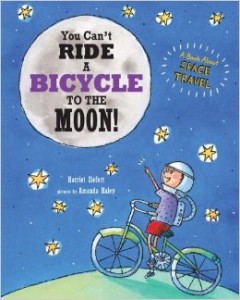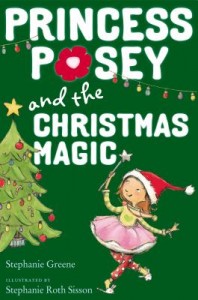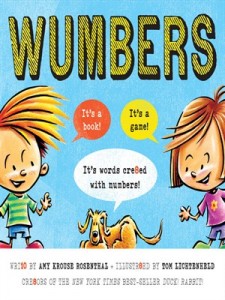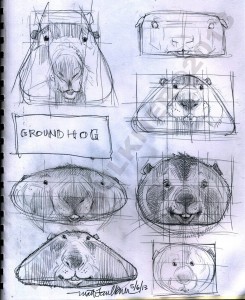Author video interview with Matt Faulkner, Ruth Barshaw and me!
Ed Spicer, fantastic first grade teacher and blogger at spicyreads.org, was kind enough to include me in a author interview video! Ed attended a reading conference with Matt Faulkner, Ruth McNally Barshaw and me this summer on Mackinac Island. Here we talk about using books in the classroom to teach writing, how to engage visual learners, and my first picture book.
Next week I’ll be giving seminars in South Dakota, Minnesota, Kansas, and Oklahoma. Please keep your fingers crossed for smooth traveling. I’m bringing hot new books to chase away the winter chills!
Read MoreA Warm Winter Tail
 Here’s what you need this chilly January: A Warm Winter Tail by Carrie A. Pearson and illustrated by Christina Wald!
Here’s what you need this chilly January: A Warm Winter Tail by Carrie A. Pearson and illustrated by Christina Wald!
This nonfiction picture book about animal adaptations in winter is perfect for a Range of Reading lesson (Core Standard #1 – check!). Carrie Pearson, a Michigander who knows all about staying warm in winter, uses a conversational tone to share a great deal of information. On each double-spread, kids learn what an animal does to stay warm in the winter when a baby animal wonders if humans do what they do to stay warm. For example, a baby box turtle asks its parent if humans dig deep into the mud and bury themselves like it does. A white-tailed deer asks, “Do they grow hollow hair/ so the coats that they wear/ trap the heat from their bodies for warmth?” A wide variety of animals is presented, and there’s plenty of extra information at the back of the book.
On their website, the publisher, Sylvan Dell, has an avalanche of free activities to go with the book (don’t you love not needing to recreate the wheel?) In the back of A Warm Winter Tail there’s a “Winter Animal Matching Activity” where students match the description with the correct animal, and if you go to sylvandellpublishing.com you can print off the animal sorting cards to make a fun independent/pairs/center activity. (Key Ideas & Details – Core Standard #2!) I can’t wait until February when a companion book, A Cool Summer Tail, comes out. Integrating Knowledge & Ideas – Standard #3!
For more information about the author, please visit: carriepearsonbooks.com.
For more information about the illustrator, please visit: christinawald.blogspot.com.
Read MoreYou Can’t Ride a Bicycle to the Moon!
 Happy 2014! My goal this year is to share more nonfiction titles with you, so your Common Core Reading Standards Bingo Board will always have Range of Reading covered! I’m enjoying the new “You Can’t” series from Blue Apple books, especially You Can’t Ride a Bicycle to the Moon! by Harriet Ziefert and illustrated by Amanda Haley.
Happy 2014! My goal this year is to share more nonfiction titles with you, so your Common Core Reading Standards Bingo Board will always have Range of Reading covered! I’m enjoying the new “You Can’t” series from Blue Apple books, especially You Can’t Ride a Bicycle to the Moon! by Harriet Ziefert and illustrated by Amanda Haley.
This picture book has short chapters and all the informational text features we educators love, including informative illustrations with labels (why hello, Integrating Knowledge and Ideas!) Your students can use the fun space facts they learn from You Can’t Ride a Bicycle to the Moon! in a creative project that incorporates using labels on a diagram or picture as a part of informative writing.
After sharing the book, discuss as a class why you can’t ride a bicycle to the moon, and discuss the features a spaceship needs to support human life. Create a class-made checklist of spaceship essentials: food storage, sleeping area, etc. Students can design, draw, and write about their ideal spaceship. (If you are extra-crafty, get out the cardboard and glue along with the paper and markers to make the spaceship 3-D!) The spaceship should have everything inside that astronauts need to live, as well as something to make your spacecraft go. Encourage students to use labels on any illustrations to convey information as well as write a paragraph or two of explanatory text.
With interesting informational books like You Can’t Ride a Bicycle to the Moon!, all your students will be superstar readers!
For more information about the You Can’t series, please visit blueapplebooks.com.
Read More
How to be a better writing teacher
The path to publication is packed with peaks and pitfalls (and apparently a plethora of P’s). It takes patience to pursue this path, and the revision process can be particularly painful (as can alliteration, so I’m stopping now). The way my editor guided me through this process taught me how to be a writing teacher.
I sent Groundhog’s Dilemma (the story formerly known as To See or Not To See) to my tireless editor in early 2012. She liked the story, but asked for revisions. Round 1.
So I revised, and my editor liked it even better. She still wanted revisions. Round 2.
So I revised and in 2013 I got that glorious phone call – I sold my manuscript! With all my debut-author-naivete, I thought my job was done. Silly, silly me! My editor told me she was excited to dig into the “official” revisions now. Round 3. And 4. And 5.
I have lost count of how many emails there have been with tweaks to make the story stronger. While each request for changes brought a momentary, involuntary stomach lurch, the way my editor approached revision taught me how to make revising less painful for my students.
1. Every email began with praise. Not “you’re the most brilliant writer ever!” or “snazzy font choice!” but honest, constructive, positive feedback. This made me feel like my work was appreciated, and that I was not in trouble.
2. When corrections needed to be made (grammatical or logical story points), my editor briefly explained why without making me feel stoopid.
3. My editor suggested changes, but made it clear that the decisions about my writing were up to me. She used words like “what if” or “I wonder” instead of “you need to do this here”.
4. Every email ended with encouragement. I knew my editor was confident in my ability to improve my work (even when my self-confidence was threadbare) and that helped me approach revision as a manageable, necessary process instead of as punishment. This is the approach I want to use with my students. Less “wrong!” and more “better!”
Today I submitted the final tweaks on the copyedited version of Groundhog’s Dilemma. I’m glad to be done working on this story, but I’ll miss working with my editor. Fingers crossed that my book sells so well, my editor will want a sequel!
Read MoreFree Books from ReaderKidZ!
 My recommendation for this week: go to ReaderKidZ.com where you can enter to win free books like Princess Posey and the Christmas Magic written by Stephanie Greene and illustrated by Stephanie Roth Sisson! December is Free Book Give-away Month on ReaderKidZ.com, a wonderful free website with resources, book suggestions and ideas to foster a love of reading in kids, K-5. I’m a regular contributor to the ReaderKidZ Librarian’s Corner, and I use this site all the time when I need new book recommendations and ideas.
My recommendation for this week: go to ReaderKidZ.com where you can enter to win free books like Princess Posey and the Christmas Magic written by Stephanie Greene and illustrated by Stephanie Roth Sisson! December is Free Book Give-away Month on ReaderKidZ.com, a wonderful free website with resources, book suggestions and ideas to foster a love of reading in kids, K-5. I’m a regular contributor to the ReaderKidZ Librarian’s Corner, and I use this site all the time when I need new book recommendations and ideas.
If you’re wondering why I’ve been so quiet these past few weeks (and quiet from me does cause most people to wonder), it’s because my sweet husband has been in and out of the hospital with a heart condition. Spending Thanksgiving in the hospital made me realize just how thankful I am for so many blessings in my life. If you are reading this newsletter or this post, please know that I am very grateful for you!
Read MoreRomelle Broas is a writer who is all about the journey. She was kind enough to ask me about my long, winding road to publishing my first picture book, and you can check out the details here:
http://www.romellebroas.blogspot.com/2013/11/debut-author-interview-kristen-remenar.html
I’m in Kalamazoo at the Michigan Association for Media in Education (MAME) conference, so next week I’ll share some great new websites I’m hearing about!
Read More
Wumbers
 “What do you get when you combine a word with a number? A wumber!” Wumbers is wri10 by Amy Krouse Rosenthal and illustr8ed by Tom Lichtenheld, the dynamic duo who made Duck! Rabbit! and other books I love passion8ly. With Wumbers, kids have 2 pay at10tion to the sound of the number word to figure out how to read the wumber. 1ce your students get the gist of it, they’ll want 2 make up wumbers of their own!
“What do you get when you combine a word with a number? A wumber!” Wumbers is wri10 by Amy Krouse Rosenthal and illustr8ed by Tom Lichtenheld, the dynamic duo who made Duck! Rabbit! and other books I love passion8ly. With Wumbers, kids have 2 pay at10tion to the sound of the number word to figure out how to read the wumber. 1ce your students get the gist of it, they’ll want 2 make up wumbers of their own!
Because Wumbers focuses kids’ attention on the small sounds in words, it’s an ideal book to hit the CCSS of Phonological Awareness. Distinguishing the numbers from the letters in the words is part of Print Concepts. 1 book for 2 standards = gr8ful teacher and 4tunate students!
As you read Wumbers to your students, call at10tion first to the way the wumber looks. What number is mixed with letters to make a new word? 1ce students identify the number, say it out loud a few times, then blend the number name with the other letters slowly. Let kids have the thrill of calling out the wumber. It7ly! (Get it – it’s heavenly? Ok, I’m still working on a good one for 7.)
Before you let your students loose on reading and writing wumbers on their own, practice as a group. Choose a number, an easy one like 2 or 4 (because obviously 7 will pose challenges, even for those of us with plenty of wumber po10tial.) Write the number word and any phonological variations: 2 is two, to, too, tu, etc. Now, see if you can come up with words that have that to-tu sound in them. Tuba becomes 2ba. Toothbrush becomes a 2thbrush. Because she is genius, Amy Krouse Rosenthal has a free activities kit available through her website: whoisamy.com. If you and your students come up with some 1derful wumbers, email me! 2gether we will celebr8 Wumbers!
For more about the illustrator, please visit tomlichtenheld.com.
Read More







